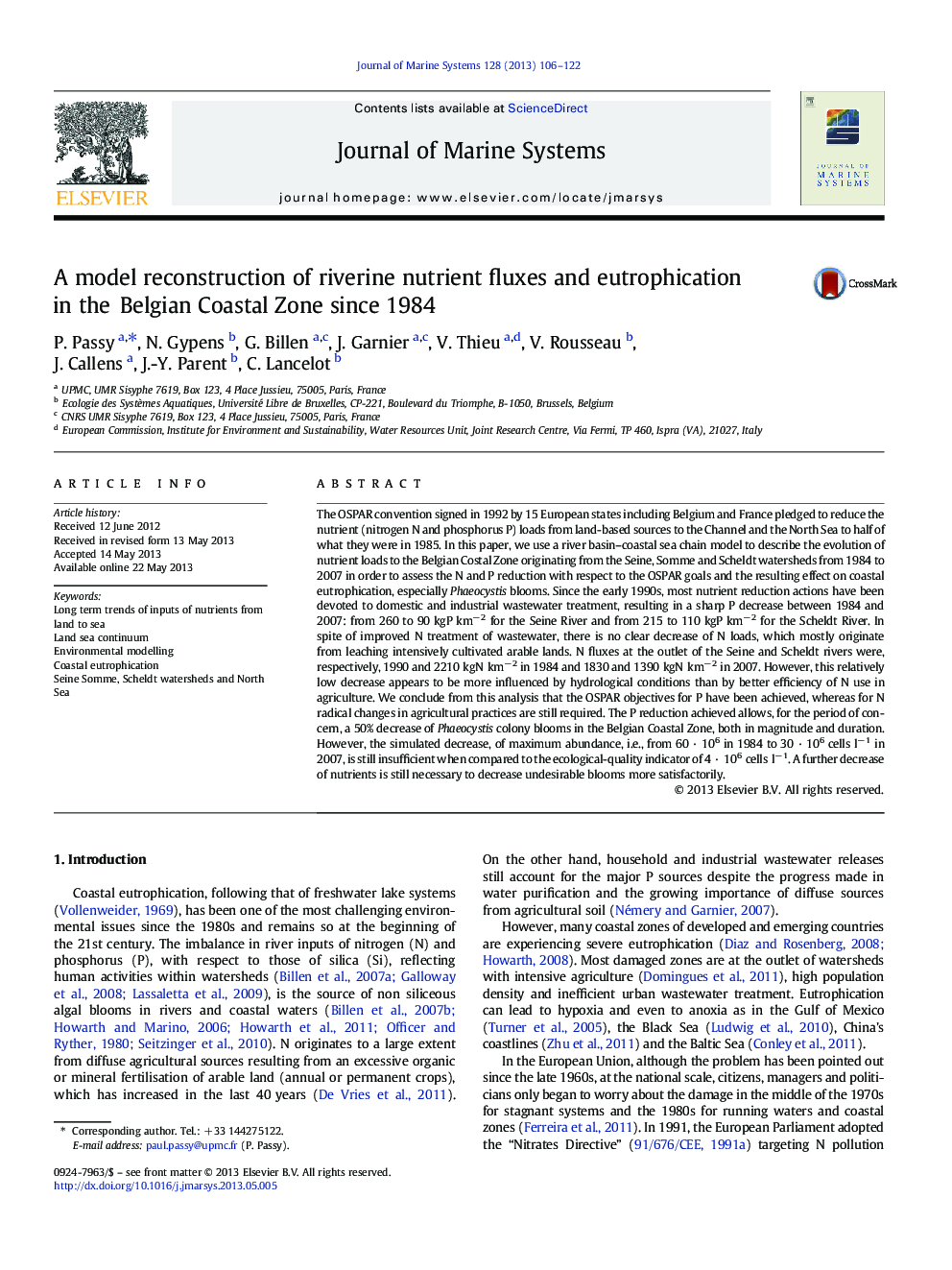| کد مقاله | کد نشریه | سال انتشار | مقاله انگلیسی | نسخه تمام متن |
|---|---|---|---|---|
| 4548061 | 1627301 | 2013 | 17 صفحه PDF | دانلود رایگان |

• We reconstructed the nutrients inputs from Seine, Somme and Scheldt to sea from 1984 to 2007.
• We modelled the aquatic continuum from rivers to coastal zone using mechanistical models.
• We showed a decrease of the algal blooms during the period in intensity and duration.
• Reduce agricultural nitrogen surplus would improve the quality of rivers and coastal zones.
The OSPAR convention signed in 1992 by 15 European states including Belgium and France pledged to reduce the nutrient (nitrogen N and phosphorus P) loads from land-based sources to the Channel and the North Sea to half of what they were in 1985. In this paper, we use a river basin–coastal sea chain model to describe the evolution of nutrient loads to the Belgian Costal Zone originating from the Seine, Somme and Scheldt watersheds from 1984 to 2007 in order to assess the N and P reduction with respect to the OSPAR goals and the resulting effect on coastal eutrophication, especially Phaeocystis blooms. Since the early 1990s, most nutrient reduction actions have been devoted to domestic and industrial wastewater treatment, resulting in a sharp P decrease between 1984 and 2007: from 260 to 90 kgP km− 2 for the Seine River and from 215 to 110 kgP km− 2 for the Scheldt River. In spite of improved N treatment of wastewater, there is no clear decrease of N loads, which mostly originate from leaching intensively cultivated arable lands. N fluxes at the outlet of the Seine and Scheldt rivers were, respectively, 1990 and 2210 kgN km− 2 in 1984 and 1830 and 1390 kgN km− 2 in 2007. However, this relatively low decrease appears to be more influenced by hydrological conditions than by better efficiency of N use in agriculture. We conclude from this analysis that the OSPAR objectives for P have been achieved, whereas for N radical changes in agricultural practices are still required. The P reduction achieved allows, for the period of concern, a 50% decrease of Phaeocystis colony blooms in the Belgian Coastal Zone, both in magnitude and duration. However, the simulated decrease, of maximum abundance, i.e., from 60 · 106 in 1984 to 30 · 106 cells l− 1 in 2007, is still insufficient when compared to the ecological-quality indicator of 4 · 106 cells l− 1. A further decrease of nutrients is still necessary to decrease undesirable blooms more satisfactorily.
Journal: Journal of Marine Systems - Volume 128, December 2013, Pages 106–122